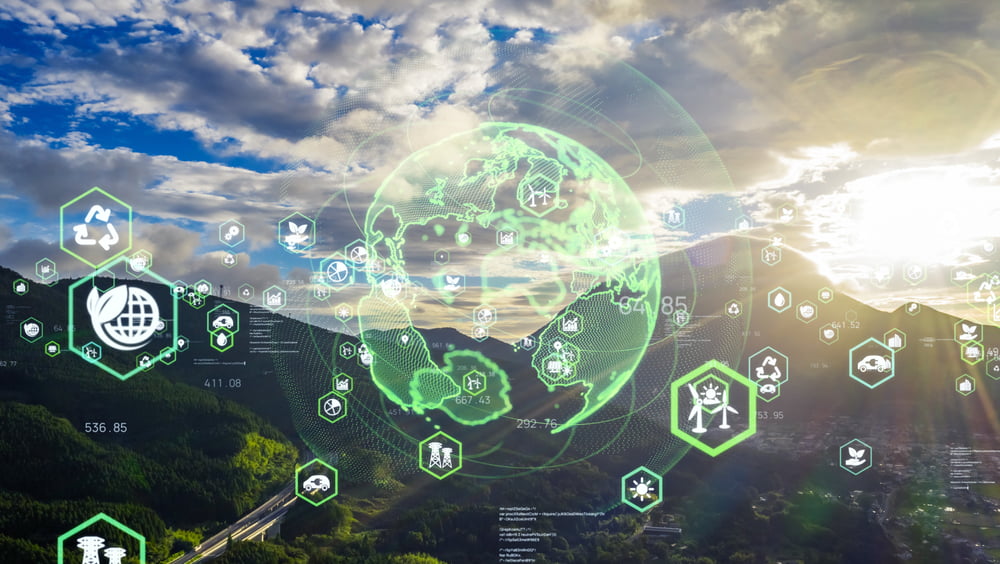

Environment
The Environmental Impact of Software Sprawl and SaaS
Three years ago, we published an article discussing the quandary of whether technology has had a net positive or net negative impact on the environment. We have stated that it can be both. While some technology, such as cloud computing, can lower our carbon footprint in some ways, it can also be a problem for the planet in others.
Cloud-powered software-as-a-service (SaaS) makes our working lives immeasurably easier — but could it be quietly destroying the planet we call home? This is an important factor that all eco-friendly businesses need to take into consideration.
The Cloud and SaaS Technology Could Be Harming the Planet
In the last decade or so, businesses have started to rely on digital solutions more than ever as apps are introduced to streamline every function, from marketing to sales. But as with all good things, they don’t come cheap — recent findings suggest that they impose a large cost on the environment.
Last year, MIT published a stunning article titled The Staggering Ecological Impacts of Computation and the Cloud. They covered some of the shocking concerns that eco-friendly businesses need to be aware of when it comes to cloud technology.
Data centers rely on air conditioning to prevent a thermal runaway event, which can interrupt the functioning of servers. Heat is the waste product of computation and must be abated to keep the digital engine running constantly. Computer room air conditioners or handlers are staples of data centers. Most data centers draw power from “dirty” electricity grids, which burn carbon to cool the Cloud. Cooling accounts for over 40% of electricity usage in most data centers.
Unfortunately, some of the smaller startups seem to be among the biggest offenders. Some of the largest data centers run by Fortune 500 companies aim to be carbon-neutral through carbon offsetting and renewable energy investments. However, smaller-scale data centers lack the resources to pursue sustainability initiatives. These traditional data centers are often set up in older buildings that are not optimized for changing power, cooling, and storage needs. As a result, many companies and universities are transferring their data to hyperscale facilities or cloud colocation centers to save on energy costs.
But how exactly could your Salesforce subscription and Zoom membership be contributing to climate harm? And what can you do to mitigate the effects? Let’s discuss.
What is software sprawl?
The saying goes that all good things are fine in moderation — so to understand how SaaS starts to cause environmental damage, we need to learn about what happens when there’s too much of it. This can be best summed up by a phenomenon known as ‘software sprawl’.
According to SaaS management platform Vertice, software sprawl occurs when “an organization’s SaaS stack consists of a large — and often unmanageable — number of applications”. This can come as a result of natural business expansion, but also through decentralized software purchasing occurring within an organisation, usually at the will of individual employees.
Individual employees who subscribe to SaaS solutions normally do so to support their own work — but unfortunately, this can quickly proliferate an organisation’s software portfolio to unmanageable levels. Excessive SaaS usage has consequences for businesses — affecting productivity, budgeting, and IT security — but it can also harm the environment.
How is SaaS affecting the environment?
There are a number of ways that SaaS technology has impacted the planet. Some of the biggest examples are listed below.
Energy and resources
We mentioned that cloud technology can help some organizations lower their carbon footprint. However, the cloud and SaaS technology predicated on it can affect the planet in negative ways as well.
As the tech behind some of the world’s most beloved digital products continues to advance, it requires more processing power from data centres around the world. It’s this demanding IT architecture that fuels cloud computing applications for millions of global users — and uses a lot of energy in the process. As a result, fossil fuels are depleted, and polluting greenhouse gases are released.
As Nasdaq explains: “In a typical data canter, you expect to find servers, air conditioners, cables, etc. On average, data canters that host the components of cloud computing often release huge amounts of CO2 to the environment.” Subsequently, cloud computing is recognized as an emerging sector which takes a significant environmental toll — with each data centre accounting for “100 times that used by typical office building.”
AI
The actual development of software can be another energy-intensive step in the SaaS supply chain. In the wake of recent progressions in the AI space, a spotlight has been shone upon the environmental cost of AI machine learning that has precipitated tools like ChatGPT going mainstream.
One commentator from TechTarget writes, AI’s systems “demand a huge amount of energy. In addition, training advanced artificial intelligence systems, including deep learning models, can require high-powered GPUs to run for days at a time.”
Notably, AI functionality underpins many of the popular SaaS tools currently marketed to businesses. And software vendors are looking to implement further AI functionality into their toolkits — Adobe and Google are some of the major providers already making moves — meaning that the energy demands of SaaS are set to rise further still.
What can you do to mitigate these effects?
Now more than ever, businesses small and large are looking to play their part in solving the climate crisis. But as cloud adoption continues to increase, what can your organisation do to mitigate the environmental effects of software sprawl?
Let’s take a look at some simple aims that you can work towards.
1. Rightsize your SaaS stack
Taking measures to reduce software sprawl within your organisation can help to trim the environmental toll of your tech stack. This isn’t a case of cutting out the tools that provide business value, but bringing an out-of-control portfolio back under your watchful eye.
By documenting and regularly assessing your SaaS usage, you can spot instances of redundant software that could be trimmed. For example, you might identify that there are several tools fulfilling the same function that could be consolidated into one — saving your data from being unnecessarily spread between multiple tools and reducing your SaaS usage.
2. Invest in eco-friendly tech
Yes, we’re talking about SaaS — which is inherently digital — but as software solutions continue to proliferate, many apps require dedicated physical equipment to run. This contributes to a hardware manufacturing demand not to be sniffed at, as all manner of networked speakers, monitors, cameras and more fill the office space of the average company.
While there’s no denying that you need hardware to run your systems, investing in eco-friendly office solutions like efficient LED monitors and alternative energy supplies can help to reduce your carbon footprint.
3. Participate in carbon offsetting schemes
Any scale of business will generate waste, carbon emissions, and energy demands that can’t be completely eliminated. However, for the areas of your trade where you can’t cut back, you can work to offset your carbon emissions.
Organizations such as Greenly and Earthly provide a variety of services to support businesses looking to make a net positive effect on the environment, offering investment initiatives in forestry, conservation, and alternative energy.
Ultimately, software provides an invaluable opportunity to businesses looking to start, scale, or push their operations to new heights — but it’s not without its environmental consequences. If your company is looking to go green, you’ll need to reflect on the areas where you can mitigate the knock-on effects of your software usage — and your first priority should be to sort out your sprawl.


 Environment10 months ago
Environment10 months agoAre Polymer Banknotes: an Eco-Friendly Trend or a Groundswell?

 Environment11 months ago
Environment11 months agoEco-Friendly Home Improvements: Top 7 Upgrades for 2025

 Features9 months ago
Features9 months agoEco-Friendly Cryptocurrencies: Sustainable Investment Choices

 Features10 months ago
Features10 months agoEco-Friendly Crypto Traders Must Find the Right Exchange





























